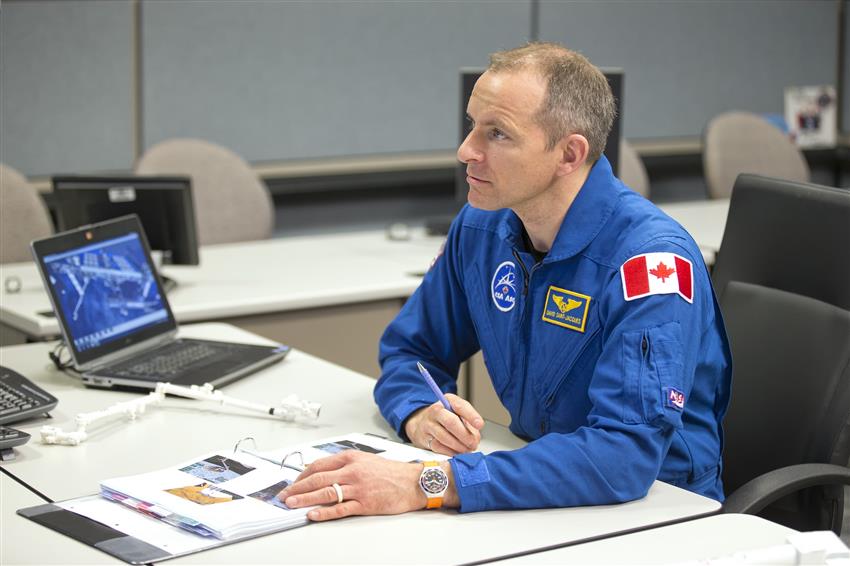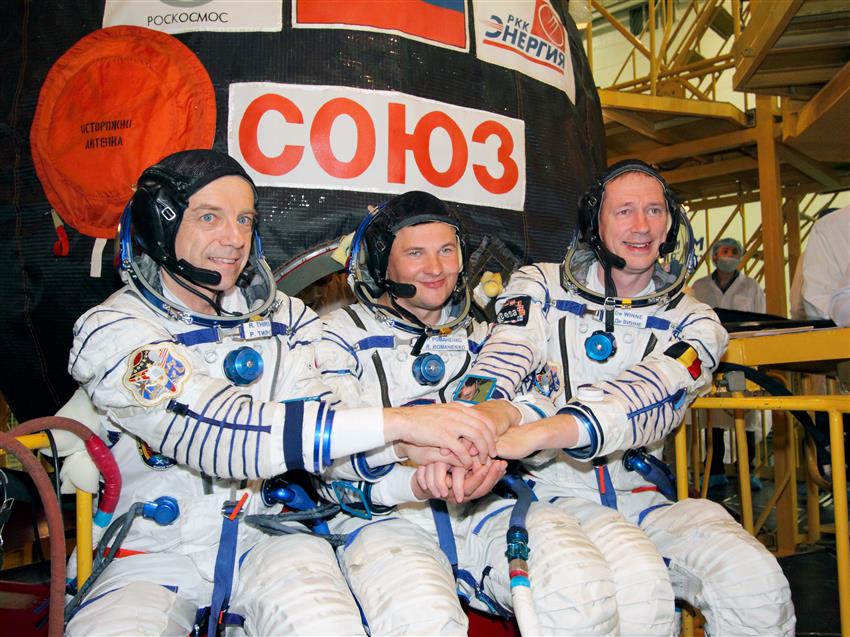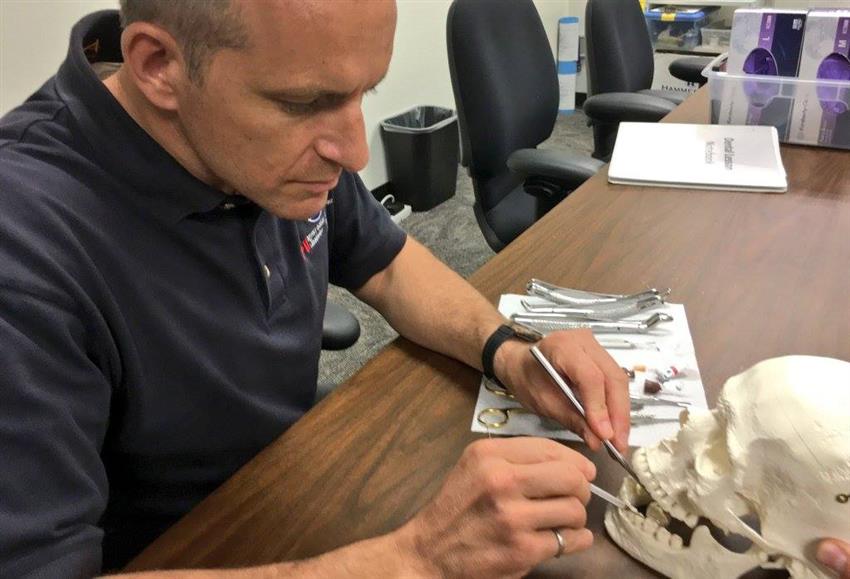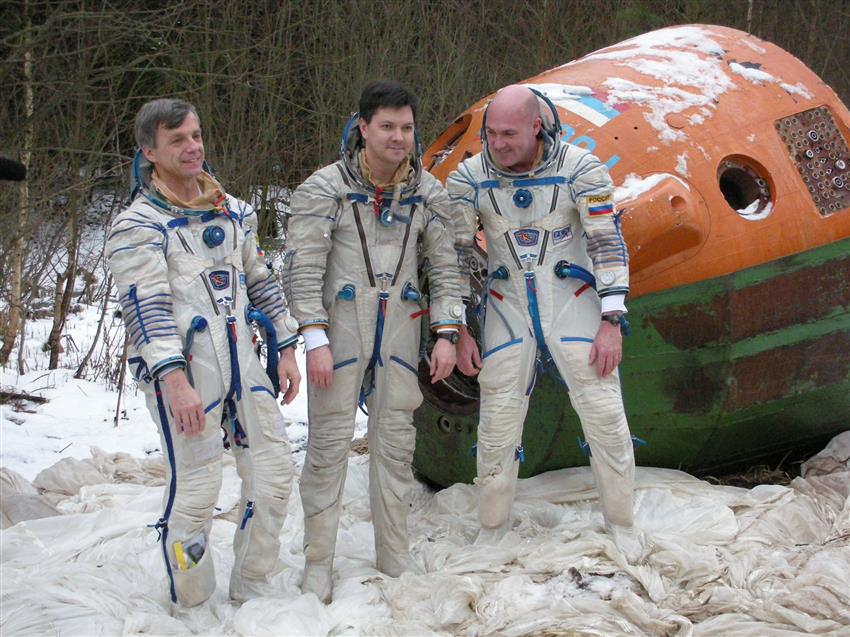Pre-assignment training
Training
When the Canadian Space Agency (CSA) selects new candidates, the aspiring astronauts must first go back to school!
All astronauts must follow a three-phase training program:
- Basic training
- Pre-assignment training
- Mission-specific training
Following this three-phased approach, astronauts may go to space to participate in a mission.
Once their basic training is successfully completed, candidates officially receive the title of astronaut. This is only the beginning of their work. While awaiting assignment to a space mission, astronauts must:
- support space activities in collaboration with ground crews
- maintain their skills
Working with two feet on the ground

Astronaut David Saint-Jacques during a CSA robotics training course in March 2014. (Credit: CSA)
Most active CSA astronauts live in Houston, Texas. They work at NASA's Johnson Space Center. However, astronaut David Saint-Jacques lives in Montreal while remaining an active astronaut.
The astronaut's responsibilities on Earth include:
- acting as capcoms
- testing robotic procedures
- developing spacewalk choreography
- training other astronauts
- educating Canadians about space and encouraging young people to study science and technology
- conducting any other tasks required by the CSA or NASA
The tasks of Canadian astronauts are not limited to those carried out in space – far from it. Even though missions onboard the International Space Station (ISS) generally last six months, astronauts spend less than 10% of their careers in orbit!
Awaiting a mission assignment
The rest of the time, astronauts receive training in order to maintain their skills in a variety of fields. The following are some examples:
Learning Russian

Robert Thirsk and his crewmates from Expedition 20/21 during a Soyuz TMA-15 systems check. (Credit: NASA/Victor Zelentsov)
As soon as they are recruited, Canadian astronauts begin learning Russian, and they continue to do so right up to their departure on a space mission.
Onboard the ISS, the two official languages are:
- English
- Russian
However, onboard the Soyuz capsule, the astronauts must be able to communicate solely in Russian with the Mission Control Centre in Moscow.
They must master the language well enough for communication to be effortless even under the stress of a launch or in an emergency situation.
Honing their medical skills

David Saint-Jacques is taking an intensive course in dentistry in case of a dental emergency in space! (Credit: CSA)
Given all of the risks involved in space missions and the requirements of certain scientific experiments, the astronauts must be able to perform medical interventions if necessary, such as:
- drawing blood
- ultrasounds
- cardio-pulmonary resuscitation
- sutures
In 1973, cosmonaut Yuri Romanenko experienced tooth pain during the Salyut 6 mission. He suffered for two weeks until the crew returned to Earth! Since then, astronauts have received training in dentistry.
Dentistry
Dental emergencies are among the unpredictable medical emergencies that astronauts might have to deal with in orbit! Their ongoing professional training includes basic training in dentistry.
Participating in research and development activities
Some astronauts help advance space technologies.
For example, Jeremy Hansen underwent intensive helicopter flight training at the Flight Research Laboratory of the NRC of Canada. A former CF-18 pilot with the Royal Canadian Air Force, he was asked to test NRC technologies by simulating a lunar landing!
These flights enabled Jeremy to evaluate the feasibility of using a Bell 205 helicopter as planetary lander simulator. The technology could potentially be commercialized and shared with the private industry and other space agencies.
Learning to survive in extreme conditions

Robert Thirsk (left), in front of a Soyuz descent module, during a winter survival exercise in Russia. (Credit: Roscosmos)
At the end of a mission in orbit, astronauts return to Earth aboard the spacecraft in which they launched.
- Soyuz lands in the steppes of Kazakhstan.
- Crew Dragon lands in the Atlantic Ocean.
- Starliner lands in New Mexico with a possible emergency landing in water.
- Orion lands in the Pacific Ocean.
Ground crews generally manage to extract the crewmembers within a few minutes of their landing.
However, in the event of a problem or a deviation from the intended trajectory, the astronauts must be prepared to survive in remote or hostile environments (e.g. at sea, in a forest or in a desert), in summer or in winter. In such cases, it might take the ground crew hours or even days to reach them!
This type of training also helps the astronauts build their:
- sense of team spirit
- decision-making ability
- leadership skills
Finally, once an astronaut receives an assignment to a space mission, he or she may begin mission-specific training.
